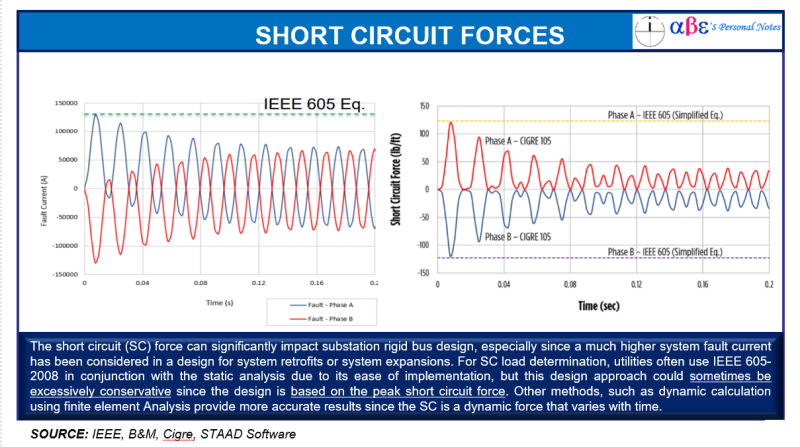rockman7892
Electrical
When performing basic force equation calculations per IEEE605 is it typically the RMS symmetrical fault current only that is used for force equation calculations on rigid bus?
In looking at the standard it appears there is a somewhat conservative force equation that uses the RMS symmetrical value only but then there are some "less conservative" equations that make use of a decrement factor and components that are associated with asymmetrical portion of fault current.
I was wondering what the standard approach was for use of symmetrical vs asymmetrical fault current and corresponding equations in the standard. Is there one that is more typically applied that the other?
Is there any "rules of thumb" where below a certain fault current threshold the fault current will be too low to have any impact on bus forces and thus can be considered negligible for such evaluations?
In looking at the standard it appears there is a somewhat conservative force equation that uses the RMS symmetrical value only but then there are some "less conservative" equations that make use of a decrement factor and components that are associated with asymmetrical portion of fault current.
I was wondering what the standard approach was for use of symmetrical vs asymmetrical fault current and corresponding equations in the standard. Is there one that is more typically applied that the other?
Is there any "rules of thumb" where below a certain fault current threshold the fault current will be too low to have any impact on bus forces and thus can be considered negligible for such evaluations?

